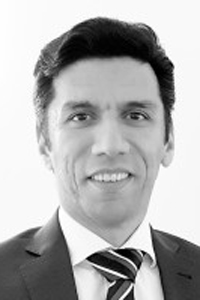- December 10, 2021
- Posted by: lbilke
- Category: Interpore Newsletter
If you can’t see this message, {readonline}click here{/readonline} All past FlashNews and Newsletters are online here: E-Newsletter
Dear InterPore colleagues, The great thing about our InterPore In Journals section is it showcases the A change of pace this week is the call for action from the International Science Be aware that the InterPore 2022 abstract deadline is coming up. Yes, you‘ve got a All the best, Matthijs de Winter
Abstract submission is open! Abstract submission for InterPore2022 is open! Abstracts can be submitted for oral Submit your abstract today! Block program Invited speaker Vahid Niasar is a Reader at the Department of Chemical Engineering and Analytical Gala dinner As can be seen in the block program, InterPore2022 features a gala dinner. The gala Mini-symposia Spotlight In the interdisciplinary spirit from which the InterPore society was born, the (MS03) Flow, |
| Leaving members | New members |
|---|---|
| Krishna M. Pillai University of Wisconsin-Milwaukee, USA | Iryna Zenyuk University of Strathclyde, United Kingdom |
| Peyman Mostaghimi UNSW Sydney, Australia | Lei ZHANG School of Petroleum Engineering China University of Petroleum (East China) |
| M. Sadegh Riasi University of Cincinnati, USA | Seetha Narayanan Indian Institute of Technology Hyderabad, India |
| Jonas Toelke Ingrain, Inc., USA | Sidian Chen University of Arizona |
| Nikhil Palakurthi Procter and Gamble, USA | Yixiang Gan University of Sydney |

Call
for Action
 The ISC has been monitoring the case of Iranian-Swedish scholar Dr.
The ISC has been monitoring the case of Iranian-Swedish scholar Dr.
Ahmadreza Djalali who was sentenced to death by Iranian authorities in 2017 based on
allegations that he had provided intelligence to Israeli authorities. Djalali has
repeatedly denied these allegations and the UN Working Group on Arbitrary Detention
called for his immediate release in 2017.
The ISC Committee for Freedom and Responsibility in Science (CFRS) works closely
with
Scholars at Risk (SAR) to monitor and advocate for Dr Djalali. On 9 December, SAR
will recognize Dr. Djalali with their prestigious Courage to Think Award for 2021.
CFRS renews its call for his immediate release – his life depends on our collective
action, and we ask all ISC Members for their support to help Dr. Djalali by calling
for his release:
- Forward the
call to action to your networks. - Raise awareness over social media by posting
this tweet. - Raise awareness over social media by creating your own tweet using
#SaveAhmadreza and tagging @ScholarsAtRisk, @ISC, your minister of foreign
affairs, and other relevant government officials. - Write to Iranian authorities as an organization or association, issuing a letter
of appeal (see SAR’s template letter here). - Write to Iranian authorities as an individual by signing and sending SAR’s online
letter of appeal. - Arrange a meeting with members of your government to raise Dr. Djalali’s case
(see detailed instructions here). - Arrange a meeting with Iranian officials to call for Dr. Djalali’s release (see
detailed instructions here).
InterPore is an Affiliated Member of the International
Science Council (ISC). The ISC
is a non-governmental organization with a unique global membership that brings
together 40 international scientific Unions and Associations and over 140 national
and regional scientific organizations including Academies and Research Councils.

Damage
Mechanics Challenge
Workshop
25
June 2022, Santa Fe, New Mexico, USA
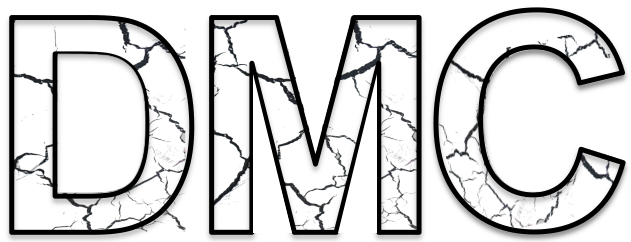 The Damage Mechanics Challenge Workshop is held in conjunction with the
The Damage Mechanics Challenge Workshop is held in conjunction with the
56th US Rock Mechanics/Geomechanics Symposium. The purpose of this exercise is to:
- compare computational approaches on damage evolution for predicting fracture
behavior of 3D printed model rock; - identify the information provided by the different simulation approaches that
gives insight into the prediction and interpretation of failure in rock; - identify model parameters that are currently not measured or cannot be measured
in the laboratory; and - determine whether there are other experimental measurements that are needed or
better methods of performing measurements to monitor damage evolution.
This challenge exercise is used to determine the state of the art and future
directions to improve the community’s ability to simulate crack formation and
evolution in natural and engineered brittle-ductile materials. More information on
how to participate in the challenge can be found at the website

Probabilistic Nucleation and Crystal Growth in Porous Medium: New Insights from
Calcium Carbonate Precipitation on Primary and Secondary Substrates
Mohammad
Nooraiepour, Mohammad Masoudi, Nima Shokri, and Helge Hellevang
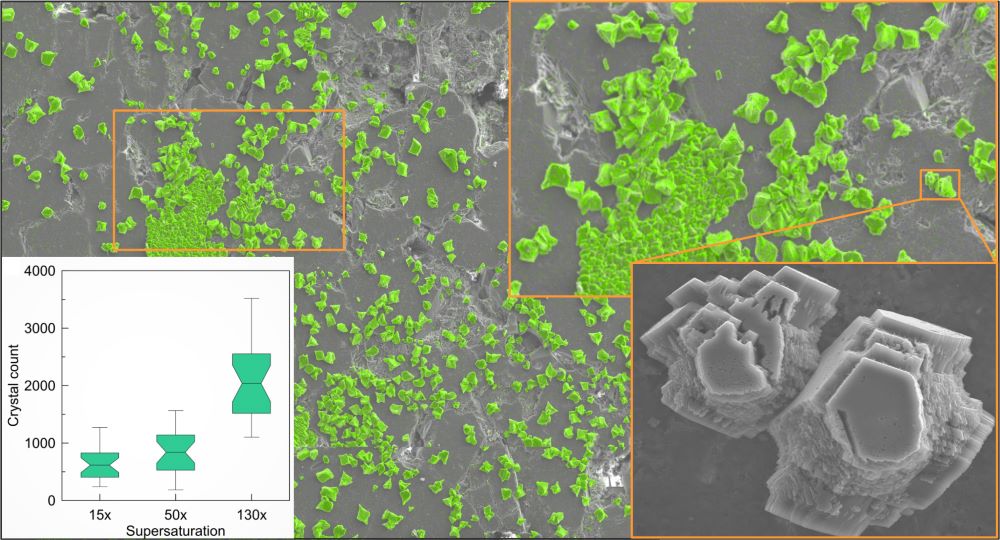
Knowledge of crystal nucleation and growth is paramount in understanding the
geometry
evolution of porous medium during reactive transport processes in geo-environmental
studies. To predict transport properties precisely, it is necessary to delineate
both the amount and location of nucleation and precipitation events in the
spatiotemporal domain. The main objective was to evaluate solid formation under
different boundary conditions when the solid-liquid interface plays a key role. New
observations were made on the effect of primary and secondary substrates and the
role of preferential precipitation locations on the rock surfaces. Our results
highlight the complex dynamics induced by substrate surface properties on the
spatial and temporal solute distribution, transport, and deposition.
ACS
Omega 2021, 6 (42)
(open access)
Corresponding
Authors: Mohammad
Nooraiepour
Nuclear Magnetic
Resonance Cryoporometry Study of Solid–Liquid Equilibria in Interconnected Spherical
Nanocages
Henry
R. N. B. Enninful, Daniel Schneider, Benjamin Rudolph, Andreas Meyer,
Simone Mascotto, and Rustem Valiullin.
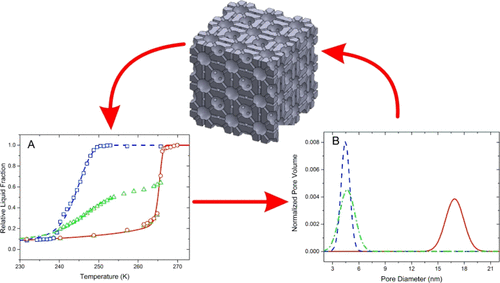
A combined experimental and theoretical study of solid–liquid phase equilibria
confined in mesoporous solids composed of spherical cages connected via
smaller-sized cylindrical irregular channels is presented. The experimental data are
analyzed using transition kernels developed for the spherical pores. They accurately
predict the variation of the non-frozen water layer thickness with temperature as
well as the positions of the solid–liquid and liquid–solid transition temperatures.
By analyzing the melting and freezing transitions as well as scanning freezing
transitions in materials with different properties of the interconnecting pore
network achieved by different synthesis conditions, an accurate information on the
textural properties and phase transition processes is obtained.
J.
Phys. Chem. C
2021, 125, 48, 26916–26926
Corresponding
Authors: Henry
R. N. B.
Enninful
Global predictions of primary soil salinization under changing climate in the 21st
century
Amirhossein
Hassani, Adisa Azapagic & Nima Shokri
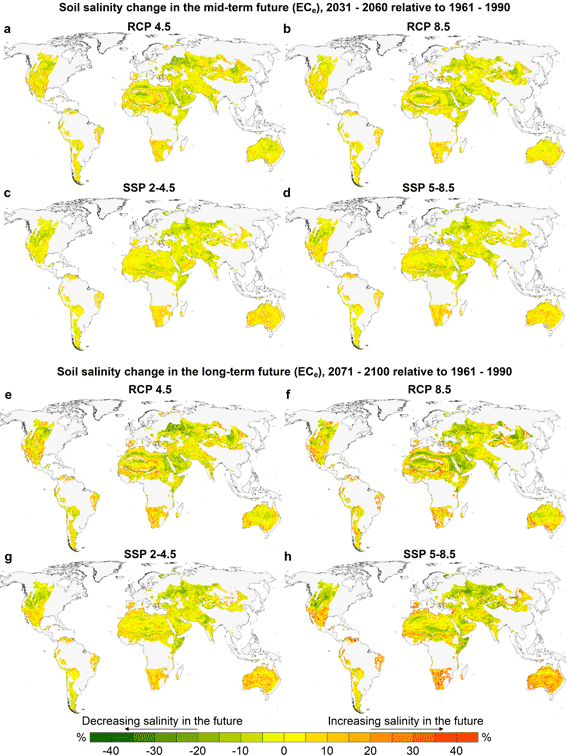
Soil salinization has become one of the major environmental and socioeconomic issues
globally. Determining how climate change influences the dynamics of
naturally-occurring soil salinization has scarcely been addressed. This paper sets
out to address this long-standing challenge by developing data-driven models capable
of predicting primary (naturally-occurring) soil salinity and its variations in the
world’s drylands. Analysis of the future predictions made here identifies a number
of dryland areas as salinization hotspots. Conversely, we project a decrease in the
soil salinity of other drylands.
Nature
Communications, vol 12, 6663 (2021)
Corresponding
Authors:
Nima
Shokri
InterPore
Members, do you want to promote your publication to the community? If
so, please submit your highlight to newsletter@InterPore.org.
Clearly
indicate which of the authors is an InterPore member (or the
institute with an Institutional Membership). Note that we will not
review the entries nor does InterPore endorse the published work. Furthermore,
we publish on a “submitted first, published first” basis. The highlighted
publication should be no older than 6 months (available online).
The
highlight should be short (max
100 words) and contain an
illustration. Please note that we offer this opportunity exclusively to
InterPore members. If you would like to become a member, please have a look here.

If
you have a job opening in your institute and would like to promote it
internationally, please send the description and weblink or PDF to newsletter@interpore.org,
and
we’ll be happy to add it to the list.

| Date | Event |
|---|---|
| 30 May – 2 June 2022 | The 14th annual InterPore meeting (Abu Dhabi) |
| 27-30 November 2022 | The Australian Chapter meeting |
| 22-25 May 2023 | The 15th annual InterPore meeting (Edinburgh, United Kingdom) |
| 14-17 May 2024 | The 16th annual InterPore meeting (Albuquerque, New Mexico, USA) |

Imprint
InterPore News, www.interpore.org
Published
in
electronic form by International Society for Porous Media
(InterPore)
Circulated
free of charge to members and non-members of
InterPore.
Articles and news items on the study and characterization of porous
media,
especially
when relevant to other types of porous media,
are
welcomed for publication in this newsletter, issued twice a month.
Contact us via newsletter@interpore.org.
Editors
- Matthijs
de Winter (Editor in
Chief) - Leslie
Jakobs (Managing
Editor) - Lars
Bilke (Production
Officer) - Felipe
P.J. de Barros (Assistant
Editor, Research Spotlights) - Serveh
Kamrava (Assistant Editor,
Social Media)

In order to unsubscribe from the InterPore {list:name} mailing list click here:
{unsubscribe}unsubscribe{/unsubscribe}

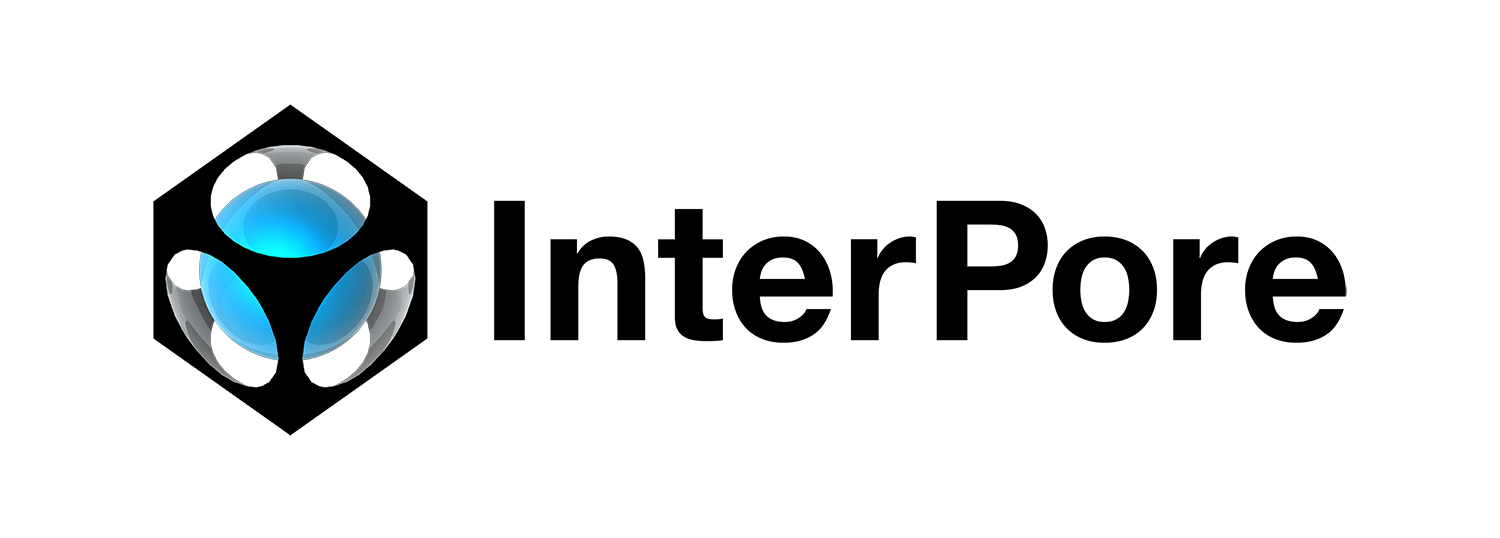

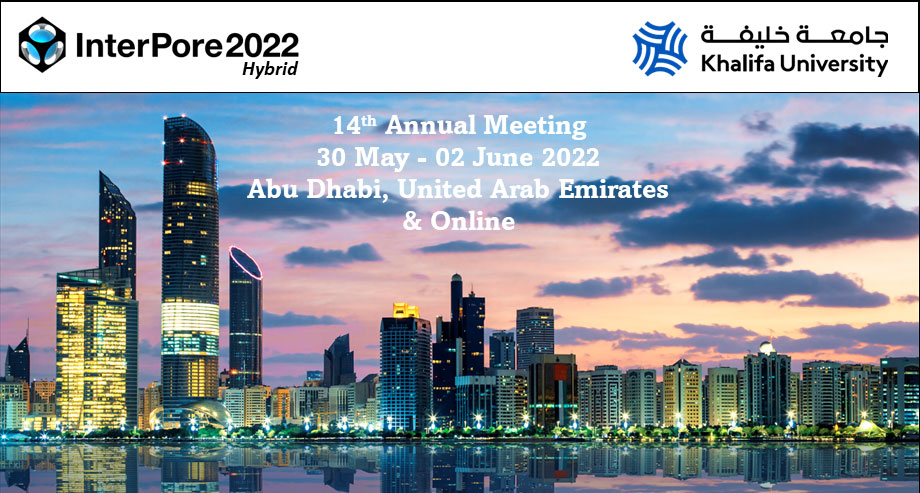
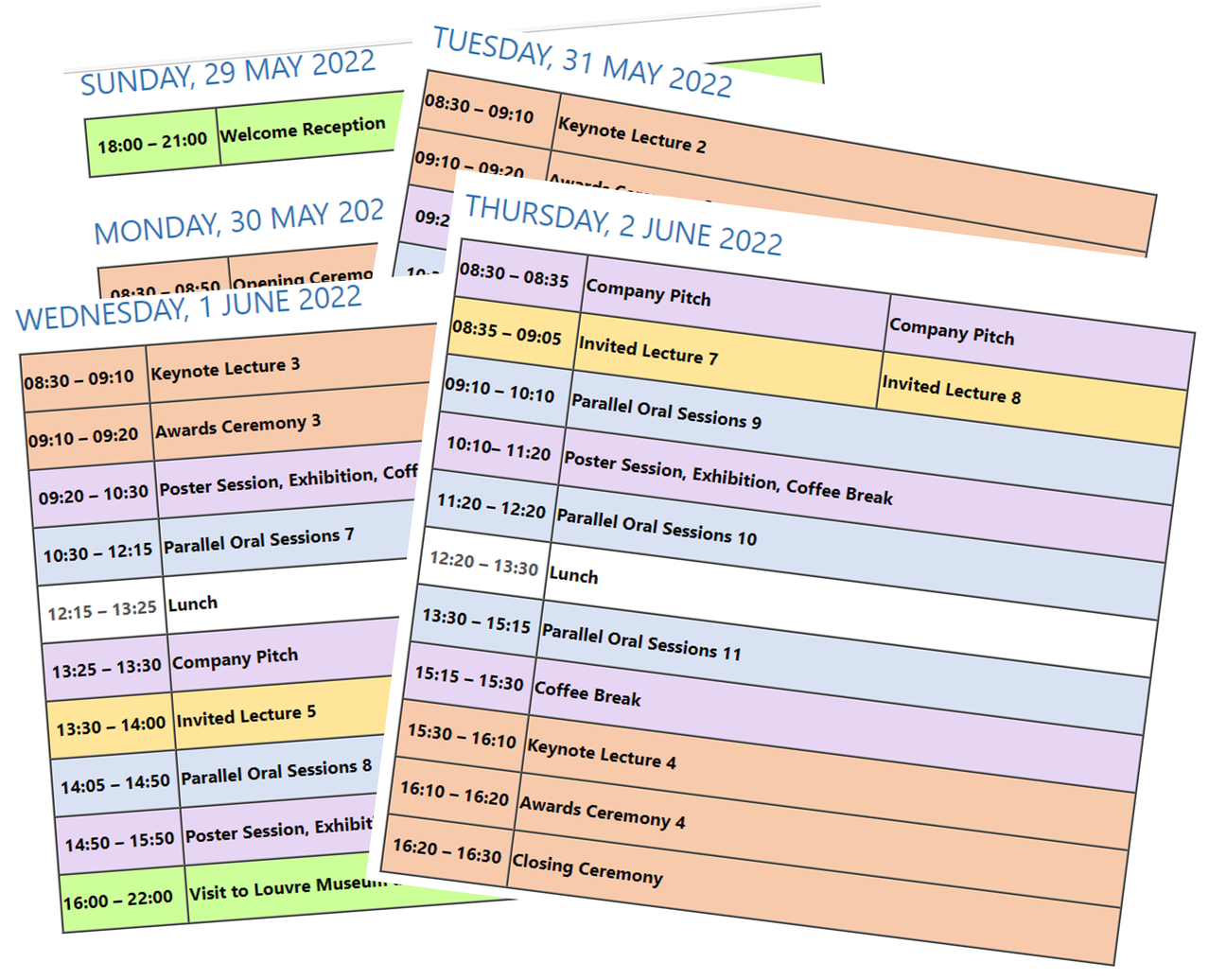 The InterPore2022 block program is available. Please visit the
The InterPore2022 block program is available. Please visit the 